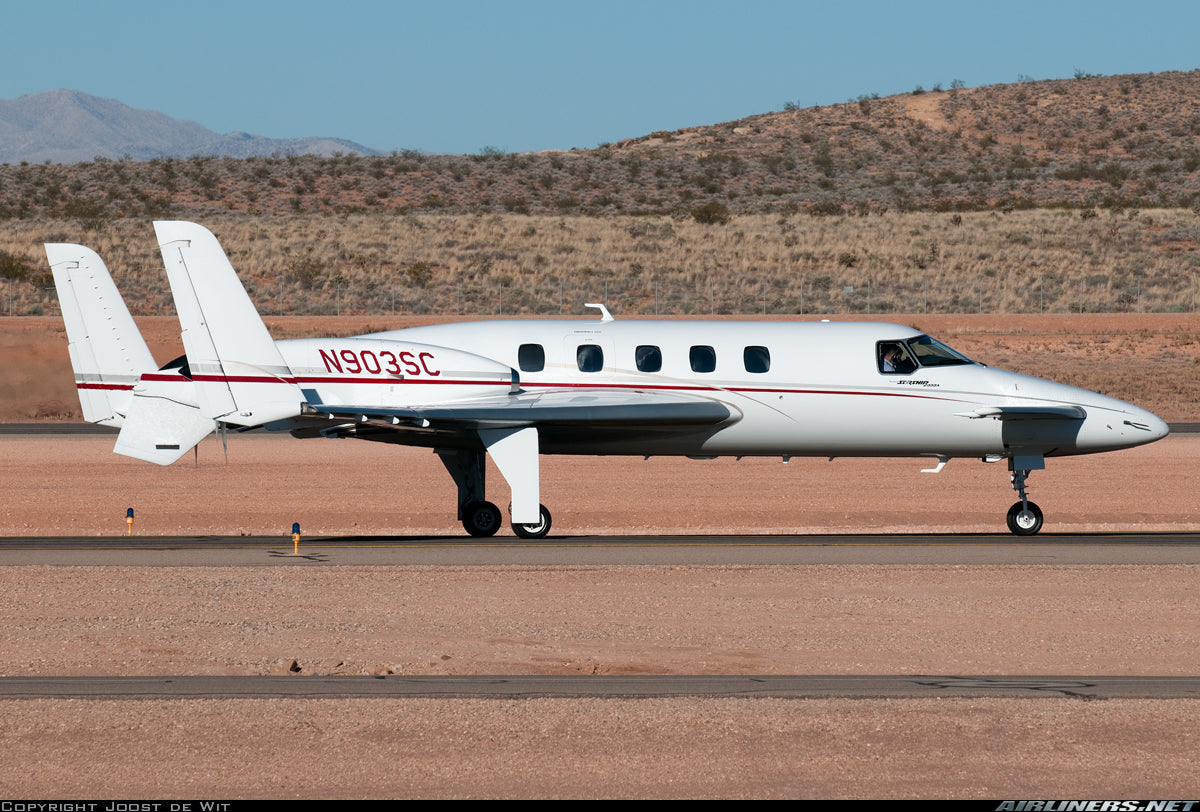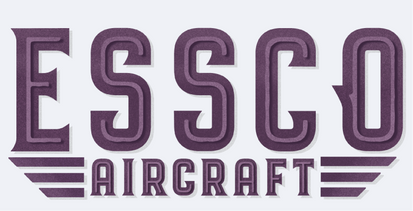
Number 98 of 100 in 100: The Beechcraft Starship
Conceptualization:
The Beechcraft Starship emerged during a period of rapid technological advancement in aviation. By the late 1970s, business aviation was increasingly shifting toward jet-powered aircraft, but turboprops remained a popular choice due to their operating efficiency and lower fuel consumption. Beechcraft, already an industry leader with its successful King Air series, saw an opportunity to develop a next-generation business aircraft that could blend the efficiency of turboprops with the speed and sophistication of jets. Their goal was to create a high-performance corporate aircraft that would replace the King Air while offering cutting-edge technology and futuristic design.
Development of the Starship officially began in 1979, but progress slowed when Beechcraft was acquired by Raytheon in 1980. After the acquisition, the project resumed in 1982, when Beechcraft partnered with Burt Rutan’s Scaled Composites to refine the concept and construct an 85% scale proof-of-concept prototype. The Starship was envisioned as a pressurized, twin-turboprop business aircraft featuring an all-composite airframe, a rear-mounted pusher-propeller configuration, and a canard layout. These innovations were designed to increase fuel efficiency, reduce cabin noise, and improve aerodynamic performance. With these advancements, Beechcraft aimed to attract corporate buyers and private operators seeking a futuristic, high-tech alternative to traditional turboprops.
Original Design:
The Beechcraft Starship was a revolutionary departure from traditional aircraft design, primarily due to its canard configuration and pusher-propeller setup. Instead of a conventional tail, the Starship used forward-mounted canards for pitch control, eliminating the need for a horizontal stabilizer at the rear. This design enhanced stall resistance, as the canards would stall before the main wing, allowing for smoother recoveries. Additionally, the rear-mounted Pratt & Whitney PT6A-67A turboprop engines drove five-blade pusher propellers, significantly reducing cabin noise compared to conventional tractor-style propeller aircraft. While this configuration allowed for cleaner airflow over the wings, it also presented efficiency challenges, as propeller performance could be affected by disrupted airflow from the fuselage and wings. The result was a distinctive handling experience, requiring pilots to adapt to its unique stall characteristics and power management.
Another major innovation was its all-composite airframe, making the Starship one of the first business aircraft constructed almost entirely from carbon-fiber composites. Unlike traditional aluminum construction, composites promised a stronger, lighter structure, but FAA certification requirements forced Beechcraft to reinforce the design, leading to higher-than-expected empty weight that impacted overall performance. The cabin was designed for executive comfort, featuring large windows and a spacious layout for six passengers, though some configurations could accommodate eight. Despite its quiet ride and futuristic aesthetics, the increased weight limited its payload capacity, making it less competitive with traditional turboprops like the King Air. Though the Starship never gained commercial success, it remains a visually striking and innovative aircraft that showcased the potential of composite materials and unconventional aerodynamics.

Photo Credit: airliners.net - Brian Bartlett
Principal Designer:
The revolutionary design of the Beechcraft Starship was a collaborative effort between Beechcraft’s in-house engineering team and Burt Rutan’s Scaled Composites. While Beechcraft had already envisioned a next-generation turboprop to succeed the King Air, they sought Rutan’s expertise to refine the design and create a proof-of-concept prototype. In 1982, Beechcraft contracted Scaled Composites, a company renowned for its innovative aircraft designs using composite materials and canard configurations, to help develop the Starship. Rutan, already famous for his VariEze and Long-EZ homebuilt aircraft, brought his extensive experience with lightweight composite structures and unconventional aerodynamics to the project. These design principles were key to the Starship’s futuristic canard layout, pusher-propeller configuration, and full-composite airframe.
While Scaled Composites developed the prototype, Beechcraft’s engineers had to modify the design significantly to meet FAA certification requirements. This included reinforcing the composite structure, which ultimately increased the aircraft’s empty weight, reducing some of the performance benefits originally envisioned. Beechcraft also added redundant avionics and flight control systems, ensuring compliance with regulatory standards but further complicating the production process. The collaboration between Beechcraft and Rutan’s team was not without friction, as balancing cutting-edge innovation with FAA regulations proved to be a significant challenge. Despite these hurdles, the Starship emerged as one of the most ambitious and technologically advanced turboprops of its time, setting the stage for future advancements in composite aircraft construction.
Production Run:
The first Beechcraft Starship took flight on February 15, 1986, after years of development delays and cost overruns. However, despite its futuristic appeal and engineering feats, the aircraft struggled in the marketplace. Its high production costs, paired with skepticism from traditional aircraft buyers, led to low demand. By 1995, Beechcraft ceased production after manufacturing just 53 units, including prototypes.
Even after production ended, the company continued to face challenges in supporting the small fleet. By the early 2000s, Beechcraft began decommissioning unsold and underused Starships, dismantling many of them to reduce ongoing maintenance costs. Today, only a handful of Starships remain airworthy, flown by dedicated owners who appreciate their unique place in aviation history.
Evolution:
During its brief production run, the Beechcraft Starship underwent several refinements, the most notable being the Starship 2000A. This variant introduced several modifications aimed at improving passenger comfort and operational efficiency. One key change was the reduction of seating capacity from eight to six passengers, creating a more spacious and luxurious cabin environment. Additionally, Beechcraft made adjustments that marginally increased the aircraft's range, further enhancing its appeal to business travelers.
Beechcraft also implemented software and avionics updates to address early concerns about the aircraft’s digital flight systems. However, due to the small fleet size, extensive upgrades across all units were not performed. Despite these refinements, the Starship continued to struggle in the business aviation market, as traditional buyers remained skeptical of its unconventional design and high production costs. While the 2000A variant brought improvements, it was not enough to revive sales. The Starship remained an engineering outlier, technologically advanced yet ultimately unable to compete with more conventional alternatives in the market.

Photo Credit: airliners.net - John Padgett
Specifications:
Beechcraft Starship 2000A Specifications:
General Characteristics:
- Crew: 1 or 2
- Capacity: 6
- Length: 46 ft 1 in (14.05 m)
- Wingspan: 54 ft 5.70 in (16.6 m)
- Height: 12 ft 11 in (3.94 m)
- Wing area: 281 sq ft (26.1 m2)
- Empty weight: 10,085 lb (4,574 kg) standard empty weight
- Gross weight: 15,010 lb (6,808 kg) max ramp weight
- Max takeoff weight: 14,900 lb (6,759 kg)
- Fuel capacity: 565 gallons
- Powerplant: 2 × Pratt & Whitney PT6A-67A turboprop
- Propellers: 5-bladed McCauley, 8 ft 8 in (2.64 m) diameter
Performance:
- Maximum speed: 385 mph (620 km/h, 335 kn)
- Cruise speed: 353 mph (568 km/h, 307 kn)
- Range: 1,742 mi (2,804 km, 1,514 nmi)
- Service ceiling: 35,000 ft
- Rate of climb: 2,748 ft/min (13.96 m/s)
- Wing loading: 53 lb/sq ft (260 kg/m2)
- Power/Mass: 6.2 lb/shp
In Comparison to Other Aircraft in its Class:
Compared to its peers, the Beechcraft Starship 2000A was designed as a modern alternative to traditional turboprop business aircraft but struggled to gain market traction due to economic factors and certification challenges.
Beechcraft King Air 350 vs. Beechcraft Starship 2000A
The King Air 350 remains one of the most widely used twin-engine turboprops in business aviation. It offers a higher payload capacity and a slightly longer range (approximately 1,806 nautical miles) than the Starship 2000A’s 1,514 nmi. In terms of cruise speed, the Starship falls only slightly behind.
- King Air 350 Max Cruise Speed: 312 knots (359 mph)
- Starship 2000A Cruise Speed: 307 knots (353 mph)
Beechcraft Starship 2000A vs. Cessna Citation II
When compared to entry-level business jets such as the Cessna Citation II, the Starship 2000A demonstrates advantages in fuel efficiency but falls behind in altitude capability, speed, and range.
- Cessna Citation II Max Speed: 404 knots (465 mph)
- Starship 2000A Max Speed: 335 knots (385 mph)
While the Starship 2000A's service ceiling of 35,000 feet is comparable to some small jets, the Cessna Citation II exceeds it at 43,000 feet.

Photo Credit: airliners.net - Brian Bartlett
Safety Record:
Despite its limited production, the Starship maintained a strong safety record, with no major fatal accidents attributed to its design. The composite airframe was exceptionally strong, and the aircraft’s systems were designed with redundancy in mind. There were some isolated incidents, such as nose wheel failures and minor landing gear malfunctions, but these did not result in significant safety concerns.
Compared to other aircraft in its category, the Starship’s accident rate was low, largely because so few were built and operated. Its robust construction and well-designed flight systems contributed to its reputation as a safe, albeit rare, aircraft.
Conclusion:
The Beechcraft Starship was a bold, forward-thinking aircraft that was ultimately ahead of its time. While it struggled commercially, its innovative use of composites, advanced avionics, and unique aerodynamic design left a lasting impact on aviation. Today, the Starship remains a symbol of what’s possible when engineers push boundaries, even if the market isn’t always ready to follow.

Photo Credit: airliners.net - Jaysen F. Snow ~ Midwest Tail Chasers
Bibliography:
Pima Air & Space Museum – Beechcraft Starship
PilotMall - The History of the Beechcraft Starship and Its (Sad) Ending
Simple Flying - Do Beechcraft Starships Still Fly Today?
Aviation Insider - Beechcraft Starship Guide & Specs
Plane & Pilot - Beechcraft Starship
